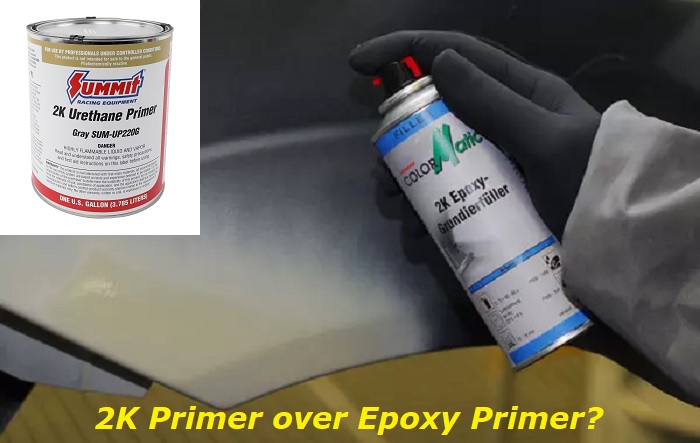Epoxy primer is a great way to seal and protect your wood, metal, and other surfaces. The problem with epoxy is that it can be very messy to apply, which can make it difficult to achieve the best results.
One solution is to use a 2K primer over the top of your epoxy. This will provide you with an extra layer of protection but will also allow you to easily wipe off any excess after application. However, what are the risks involved in using this technique? Let’s take a look at some of the pros and cons below.

Pros of using 2K primer over epoxy primer
- You can use 2K primer over epoxy primer without fear of it damaging the surface of your wooden project. This is especially important when you’re working with expensive or delicate woods that could be damaged by an epoxy primer.
- If you have an existing project that has been stained or finished with other products on top of an unprotected surface like wood, 2K primer will protect those surfaces from future damage. It will also help prevent future staining if you plan on using clear stain or paint over the top of your project later on down the road (if you don’t want to change out your deck boards every year).
- This will give you the best protection possible from all elements including UV rays, moisture, and abrasion damage.
- The biggest pro of the 2K primer is that it can be used on almost any surface. It will work great on hardwood floors, vinyl floors, concrete, and even tile floors.
Some cons:
- If you’re planning on painting something that may require multiple coats over the top of your project after applying a clear coat or two layers of polyurethane (like decks), this is not a very good idea.
- The downside is that it can be difficult to remove if you make a mistake while applying it or if you need to refinish your floor (though this isn’t usually an issue).
- The biggest con about using the 2K primer over epoxy primer is that it doesn’t smell as good during application as other options (this may not be much of a problem if you have pets). Also keep in mind that while it does last longer than other types of coatings, it can still chip easily if not applied properly.
Our conclusions
2K primer is made to be applied over epoxy coatings to create a seamless finish that can be used in any application. The question is: should you use 2K over epoxy? The short answer is: it depends on what type of application you’re doing and how thick your base coat is.
If you’re using a very thin base coat (like on furniture), then it might not make sense to apply 2K over it because the 2K will just harden up too much when it dries out. But if you’re working with something like stone or marble, then there’s no need for concern about how much time it takes for your primer to dry.
- Can You Unmix Paint: Techniques, Consequences, Alternatives - February 23, 2024
- Does Primer Need to be Mixed? Effective Primer Application - February 22, 2024
- How to Make Old Paint Usable Again: Retrieving and Preserving Paint - February 21, 2024



